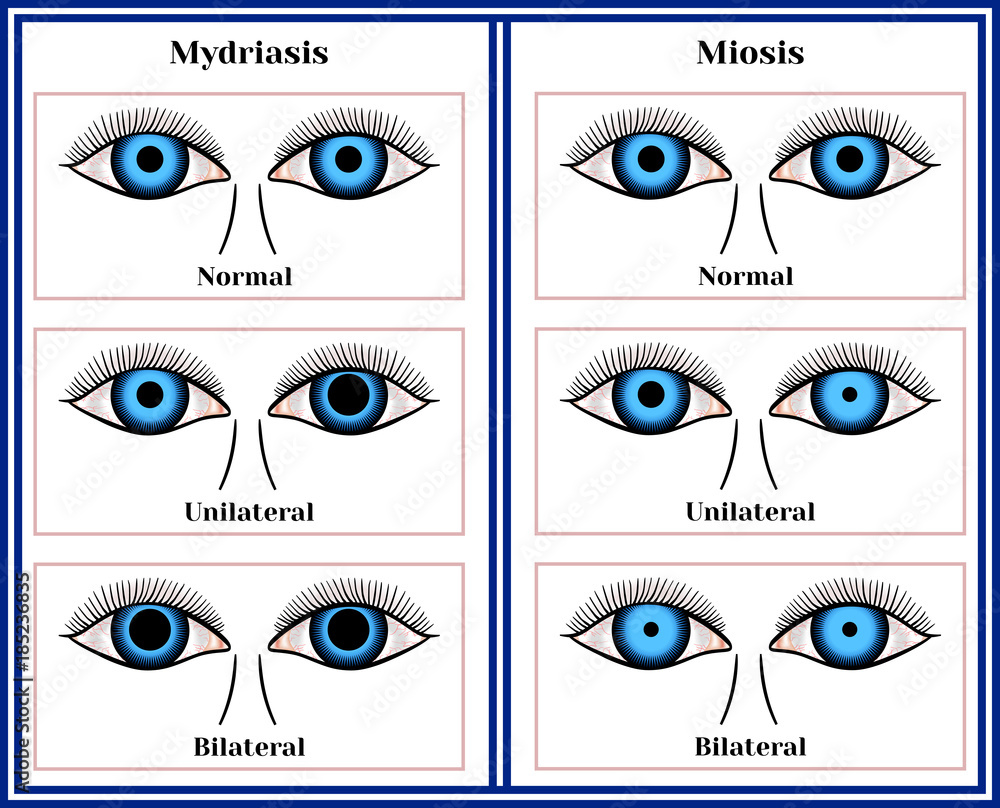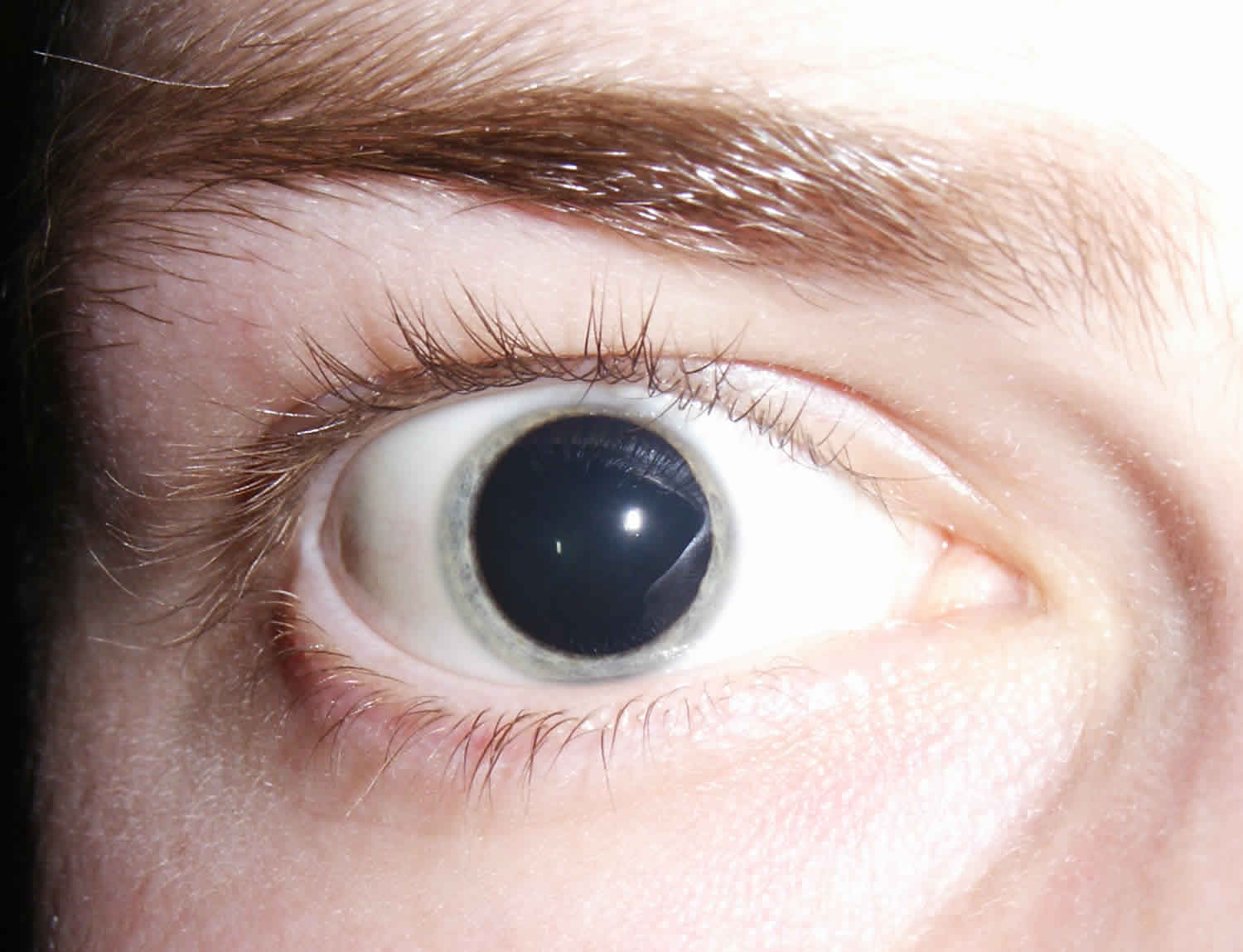Mydriasis & Eye Health: Insights & Information
Are you curious about the intricacies of eye health and the subtle yet significant changes that occur within our eyes? Understanding the dilation of the pupils, a condition known as mydriasis, offers a fascinating glimpse into the body's responses to light, emotions, medications, and even underlying medical conditions.
The realm of ophthalmology delves deep into the complexities of vision and eye health. Mydriasis, characterized by an unusually enlarged pupil, is a focal point for both diagnostic assessment and clinical management. The pupil, the dark central opening of the eye, functions dynamically, adapting to light variations. It narrows (constricts) in bright light and expands (dilates) in dim conditions, allowing us to see optimally in different environments.
Let's delve into the key aspects of Mydriasis.
| Feature | Details |
|---|---|
| Definition | Mydriasis is the medical term for dilated pupils, where the pupil of the eye is larger than normal. The normal pupil diameter can vary, but a pupil that is 5mm or larger, especially when it doesn't constrict in response to light, is generally considered mydriasis. In German, this is referred to as "Als mydriasis bezeichnet man die weitstellung der pupille ber einen durchmesser von 5 mm hinaus." |
| Causes |
|
| Symptoms |
|
| Diagnosis |
|
| Treatment | The treatment depends on the cause of mydriasis. This can involve:
|
| Complications |
|
| Differential Diagnoses |
|
| Testing for Pharmacologic Mydriasis | If pharmacologic mydriasis is suspected from topical agents, specific tests can be conducted by an ophthalmologist to determine the exact cause. |
Mydriasis can stem from various factors, including normal physiological responses, medications, injuries, and underlying medical conditions. For instance, pupils naturally dilate in low-light conditions to allow more light to reach the retina, enhancing vision in dim environments. This is a normal and adaptive physiological response. Conversely, the dilation of pupils can also be triggered by emotional responses, such as excitement or fear, reflecting the activation of the sympathetic nervous system.
However, mydriasis can also be indicative of more serious issues. Certain medications, particularly those with anticholinergic properties, can cause the pupils to dilate. These include some antidepressants, antihistamines, and motion sickness medications. Recreational drugs like cocaine, amphetamines, and LSD are also known to induce mydriasis. Injuries, such as those affecting the eye or the head, can disrupt the nerves or muscles that control pupil size, leading to dilation. In some cases, mydriasis can be a symptom of neurological conditions, such as a brain tumor or stroke, where the pressure on the brain affects the nervous pathways. A fixed dilated pupil in an unconscious patient is considered a serious sign, possibly indicating herniation due to an intracranial mass lesion.
In the context of eye examinations, dilating eye drops are frequently used by ophthalmologists to widen the pupils, allowing a clearer view of the eye's internal structures, including the retina and optic nerve. This procedure helps in the early detection and management of various eye diseases.
Furthermore, mydriasis plays a role in certain eye conditions, such as angle-closure glaucoma, where the dilated pupil can contribute to the closure of the drainage angle of the eye, leading to increased intraocular pressure. This underscores the importance of understanding the underlying causes and potential risks associated with dilated pupils.
The opposite of mydriasis is miosis, where the pupils constrict or shrink. Miosis can be caused by certain medications, such as opioids, or by specific neurological conditions. Understanding both mydriasis and miosis provides a comprehensive understanding of how the pupils respond to various stimuli.
The diagnosis of mydriasis involves a comprehensive approach that considers the patient's medical history, a thorough eye examination, and potentially additional tests. The medical history helps in identifying potential causes, such as medication use or previous injuries. The eye examination includes assessing pupil size, reaction to light, and overall eye health. In cases where pharmacologic mydriasis is suspected, specific tests, such as the administration of eye drops, can help determine the exact cause. Neurological examinations may also be necessary if a neurological cause is suspected.
The management of mydriasis depends entirely on the underlying cause. If the dilation is due to a medication, adjusting or discontinuing the medication may be necessary. If it is caused by an injury or medical condition, the focus shifts to treating the underlying condition. For instance, in cases of angle-closure glaucoma, immediate treatment is required to lower intraocular pressure and prevent vision loss. In the case of injury, prompt assessment and potential referral are crucial.
The implications of mydriasis extend beyond its immediate causes and symptoms. It can influence the treatment of other eye conditions, such as the use of dilating eye drops during eye examinations. In addition, the presence of mydriasis can raise cosmetic concerns for some individuals, as dilated pupils can alter the appearance of the eyes. Understanding these aspects is crucial for managing mydriasis effectively.
The principles of eye care include a broad range of diagnostic procedures, treatment protocols, and ongoing monitoring. For individuals within the Dri ecosystem, this means access to comprehensive resources to manage a wide range of eye conditions, supporting patient needs across various stages of care.
In the digital era, platforms offer a suite of benefits, including free access, course registration, and resource access. These platforms also facilitate certification maintenance and interaction with other users. These features streamline access to updated materials and industry best practices, which can ultimately help in standardizing healthcare protocols.
To maintain the security of your account, it's important to avoid repeated failed login attempts, which can lead to account disablement. If you have several failed login attempts, it is recommended to use the "forgotten password" link to reset your password before your account is disabled. If you experience any issues or find bugs, it is advised to send an email to appsupport@dayanandasagar.edu. If a resolution is not provided within three days, further escalation to the provided contacts is recommended.
For ERP (Enterprise Resource Planning) access, you should click on your institution, which will direct you to the necessary resources. Digital tools such as these are designed to provide an affordable, secure, reliable, and open-source solution for users.
Understanding mydriasis and related eye conditions is crucial in providing high-quality care. As such, staying updated on the latest trends and predictions is essential. The presentation of the 2024 DRI trends report and the 2025 DRI predictions report by the future vision committee provides valuable insights. These reports are typically presented by experts who provide overview of the findings with individual members discussing key issues.
In eye examinations, it is also important to take a detailed history of the patient, including any history of trauma. It is also necessary to assess symptoms such as visual disturbance or loss of vision, as well as any pain at rest or during movement, and diplopia. It is also important to consider the mechanism of injury, as this can require an urgent assessment and referral.
In ophthalmology, the dilation of the pupil is often induced by medical professionals to allow for a better examination of the fundus. This procedure is often performed by applying pupil-dilating medication to the conjunctival sac of the eye.
The pupil is a dynamic component of the eye that reacts to changes in light and emotional stimuli. Understanding these nuances enables health professionals to distinguish between normal pupil responses and abnormal mydriasis.
In conclusion, the topic of mydriasis is essential to understanding various aspects of eye health. It emphasizes the importance of ongoing professional development to handle the complexities of eye health. This information will enable you to stay informed, protect your patients and excel in your profession.
.jpg)

